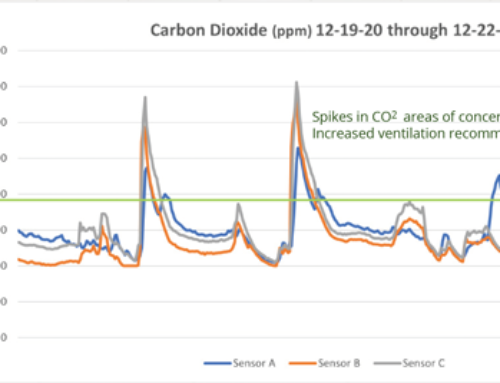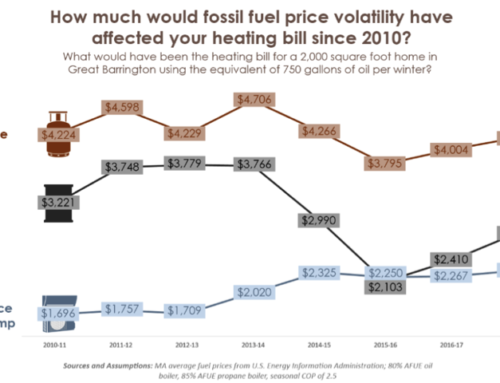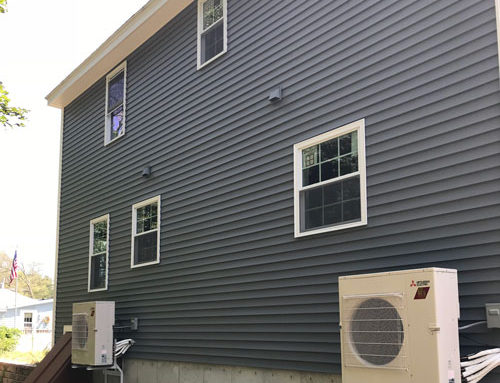Air Tight News | Fall Edition | October, 2020
The last time Air-Tight Insight was published it started with Happy New Year! And what a year it has been. The market for new construction and renovation remains strong and programs for distributing energy savings incentives are revving up and are eager to spend budgeted funds to reward best practices in energy efficiency.
Airtight Insight is intended to keep builders, renovators, code officials, and architects up to date on utility sponsored incentives and rebate changes as well offer insight on the latest developments in energy efficiency in the building industry. New relevant articles on the MA Energy Code and building science are also featured.
Air Tight Insight is a publication of Ace Energy Services, Inc., a HERS Rating company that puts building science knowledge to work with effective building enclosure air sealing services and by designing and installing high-efficiency air-source heat pumps coupled with smart ventilation systems for single-family, multi-family, and light commercial buildings. Please feel free to visit our web site: www.AceEnergyMA.com.
Indoor Air Quality
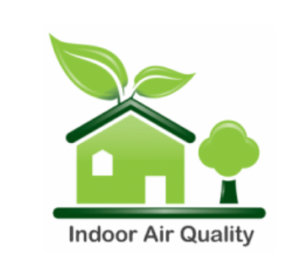 These days every time I go into a building, I think about its air quality. We have long known that indoor air quality has a significant effect on our health and comfort. Nowadays, there is a heightened interest in indoor air quality as well as a desire in taking some control. Indoor air quality is inherently complex and often challenging to control. Humidity alone in the New England climate with hot humid summers and cold dry-air winters is probably the most challenging to try to control. Nevertheless, measures can be taken by builders, remodelers, and homeowners to improve indoor air quality in significant ways. Indoor air quality monitoring, controlled ventilation, filtration, and ultraviolet radiation-c (UVC) can go a long way to ensuring upgraded indoor air quality and peace-of-mind. This article briefly describes what can be done to improve indoor air quality over the next few months.
These days every time I go into a building, I think about its air quality. We have long known that indoor air quality has a significant effect on our health and comfort. Nowadays, there is a heightened interest in indoor air quality as well as a desire in taking some control. Indoor air quality is inherently complex and often challenging to control. Humidity alone in the New England climate with hot humid summers and cold dry-air winters is probably the most challenging to try to control. Nevertheless, measures can be taken by builders, remodelers, and homeowners to improve indoor air quality in significant ways. Indoor air quality monitoring, controlled ventilation, filtration, and ultraviolet radiation-c (UVC) can go a long way to ensuring upgraded indoor air quality and peace-of-mind. This article briefly describes what can be done to improve indoor air quality over the next few months.
Ventilation
As HERS Raters, we know what the Minimum Ventilation Requirement (MVR) is for every new home we model. The MVR is the minimum amount of air that needs to change-out in a home to ensure good health. The most common ventilation equipment installed in new homes is exhaust-only using a continuously running fan. We test the air flow rate of ventilation equipment to verify that the MVR is being met.
With exhaust-only ventilation we are often recommending two (or more for larger homes) continuously running fans that are set apart to provide air change-out as evenly as possible throughout the home. While there is considerably more discussion about ventilation strategies and rates than there was before the virus, ensuring that the MVR is being met with mechanical ventilation in every home is a good first step. Having some control is better than having none such as with older homes.
Monitoring
One limitation of exhaust-only ventilation is that we do not know where fresh outdoor air is coming in for most homes. This has the potential to leave some rooms with stagnant air or not enough fresh air when occupied. If there is a concern about this for example in bedrooms where we spend about eight hours every night, we can monitor this and gather some baseline data. This data will tell us if healthy conditions exist or not. If not, a strategy to remediate the situation can be taken.
Carbon Dioxide (CO2) and Volatile Organic Compounds (VOCs) can be reasonably and accurately measured and are good indicators of indoor air quality. For example, we know that a room with a high CO2 level is likely to have stagnant air and a higher chance of passing on a cold or the flu from one person to the next.
Monitoring indoor air quality can be coupled with control. A bedroom with stagnant air is a good example. A CO2 monitor can be set to activate a fan to move air into the bedroom to maintain desired levels. How this is implemented depends on several factors and will vary significantly from one home to the next. Nevertheless, it is a sound first step in taking control of indoor air quality starting with ventilation.
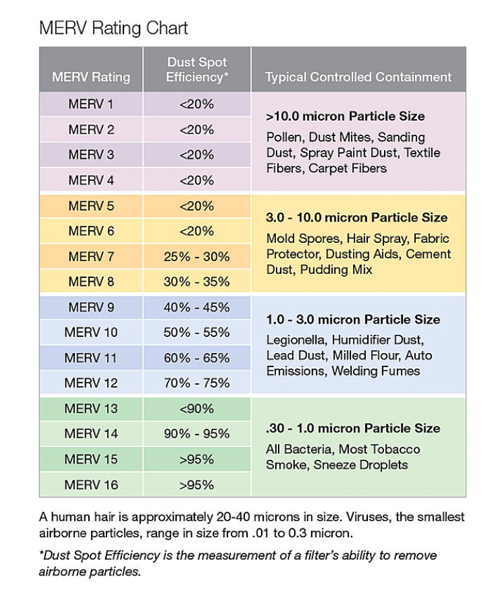 Filtration
Filtration
Air filtration has always played a significant role in indoor air quality and has taken on new significance since the virus hit. Historically, we have not paid much attention to the filters in our furnaces. They typically do not filter much and are not cleaned or replaced often enough. When they get dirty, they slow the air flow and stress the motor that drives air.
To get better filtration, a filter with a higher Minimum Efficiency Rating Value (MERV) rating number is desirable. However, higher MERV ratings means more restricted air flow. It is important to find out the manufacturer’s recommendation for the highest MERV allowed for each model number. Cleaning or replacing the filter regularly is important. Below is a chart that will help provide an overview of MERV ratings.
Ultraviolet Radiation-C (UVC)
UVC radiation is a known disinfectant for air, water, and nonporous surfaces. UVC radiation has effectively been used for decades to reduce the spread of bacteria, such as tuberculosis. For this reason, UVC lamps are often called “germicidal” lamps.
UVC radiation is commonly used inside air handlers and ducts to disinfect the air. This is the safest way to employ UVC radiation because direct UVC exposure to human skin or eyes may cause injuries, and installation of UVC within an air duct is less likely to cause exposure to skin and eyes.
To start looking at UVC and its applications go to the FDA article on UV.
Financial Incentives and Rebates Update
As 2020 draws to a close, state incentive and rebate program administrators are eager to distribute funds they budgeted for the year. What follows are descriptions of program changes and updates.
Federal Tax Credit 45L Extension
The Federal Government recently passed an extension of the 45L Residential Tax Credit 2018, 2019 and 2020. You may be able to claim the 45L Tax Credit retroactively thanks to the New Home Energy Efficiency Act. The House signed the bill and the Senate has approved for the 45L tax credits to be allowable retroactively for projects placed in service from 1/1/2018 – 12/31/2020. Taxpayers can now amend their 2018 tax return and apply the $2,000 45L credits to their 2018 tax year, or in some situations file a Form 3115 with their 2019 tax return claiming the credits in the current year.
Background on 45L
The 45L Tax Credit is an energy-efficient tax credit for residential properties. The tax credit is $2,000 per home to the builders and developers of energy-efficient buildings. Qualifying properties include: Apartments, Condos, Townhouses, and Single-family Homes. All eligible properties must be three stories or lower and must incorporate energy-efficient features such as roofing, windows, doors or HVAC systems.
Links: Program Details | Program Details
If Ace Energy Services has done a HERS rating for you or your company in the last two years, contact us and we can tell you if each and all the homes you built qualify for the credit. We can provide you with a report which you can submit to the IRS to take advantage of this substantial credit.
Mass Save
Mass Save – Renovations and Additions Program
As of October 5th, the Mass Save R & A (renovations & additions) program has given energy raters the go-ahead to resume in-person visits for customers participating in the program. We will follow the safety protocols established by Mass Save to ensure the safety of homeowners and auditors, including the use of PPE on all site visits. In addition, the program has been improved with the introduction of tools for the measurement of before-and-after energy consumption comparison, to allow for maximum rebates for energy improvements. Most residential renovation and addition projects at single-family and multi-family homes with three stories or less are eligible for assessments and energy improvement incentives. It’s best to start by calling 1-800-628-8413 or email RenovateAddMA@icf.com. HERS Raters are required for participation and can be very helpful in maximizing the rebate amount. For more information visit https://www.masssave.com/en/saving/residential-rebates/renovations-and-additions/
MA DOER
The MA DOER has two programs running that are state-wide and apply in municipalities that do not have gas or electricity from a major utility company.
MA DOER – Home MVP
The Home Energy Market Value Performance (Home MVP) pilot program. Home MVP offered incentives to help all Massachusetts residents reduce their home energy use, energy bills, and improve home comfort and performance. Link: https://www.mass.gov/guides/home-mvp.
The pilot program is not taking new applications for this year due to its success and funds running out. The purpose of the pilot has been in part to design a similar, improved program that should be rolled out going into 2021.
MA DOER – Alternative Energy Credits (AECs)
The purpose of the AEC’s is to provide an incentive for installing eligible alternative energy systems, which are not necessarily renewable, but contribute to the Commonwealth’s clean energy goals.
Eligible APS Renewable Thermal technologies include: Air Source Heat Pumps Systems, Ground Source Heat Pumps Systems, Thermal Solar Systems, Wood Biomass Systems, and Liquid Biofuel Systems. Eligibility requirements are listed at the MA DOER website.
Rebate amounts are market based and can change. Nevertheless, this is a very worthwhile rebate in which to apply.
Whole Home Air Source Heat Pump Pilot Program.
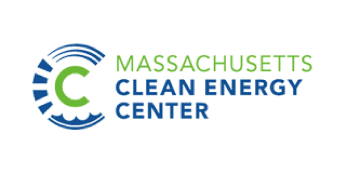
MA CEC provides rebates for the installation of whole-home air-source heat pump (“ASHP”) systems at residential properties. This is specifically for existing homes currently with natural gas and new construction projects designed to operate without fossil fuels. This pilot is meant to support ASHP systems that function as the sole source of heating in a home without the need for supplementary or back-up heat. Rebates can only be provided by listed contractors and each rebate must be approved prior to starting a heat pump installation. CEC has plenty of funds remaining – over 258 thousand dollars has been awarded to homeowners and builders so far this year for displacing gas with an all-electric heat pump system.
Useful links:
- Mass Save – https://www.masssave.com/en/saving/residential-rebates
- MA DOER Home MVP – https://www.mass.gov/guides/home-mvp
- MA DOER AEC – Alternative Energy Credit – https://www.mass.gov/service-details/qualifying-air-source-heat-pump-in-the-aps
- MA CEC (Clean Energy Center) https://www.masscec.com/get-clean-energy/residential
- Tax Incentives –https://programs.dsireusa.org/system/program/detail/1272 https://www.law.cornell.edu/uscode/text/26/45L
Code Update – MA Adopts IECC 2018
Working with a certified HERS rater remains a key part of the Energy Rating Index (ERI) program, and there are some changes to note to the program that at first glance seem minor but will have an impact on your documentation requirements as well as your ERI Index score. Here is a summary of ERI path changes:
- Changes to buried duct regulations include a clearer definition of buried-duct practices that are explicitly allowed and a simplified credit for buried ducts in the performance path.
- Minor improvement to window efficiency rating: 0.6-1.1% improvement in the prescriptive path.
- Easing of the Energy Rating Index Targets combined with improving thermal envelope requirements when using on-site renewables. For example, energy used to recharge vehicles is excluded from the ERI score.
For details, see https://www.mass.gov/info-details/building-energy-code.
Useful links
- Mass Save – https://www.masssave.com/en/saving/residential-rebates
- MA DOER Home MVP – https://www.mass.gov/guides/home-mvp
- MA DOER AEC – Alternative Energy Credit – https://www.mass.gov/service-details/qualifying-air-source-heat-pump-in-the-aps
- MA CEC (Clean Energy Center) https://www.masscec.com/get-clean-energy/residential
- Tax Incentives –https://programs.dsireusa.org/system/program/detail/1272https://www.law.cornell.edu/uscode/text/26/45L
Air Tight Insight is a publication of Ace Energy Services, Inc. a HERS Rating company that puts building science knowledge to work with effective building enclosure air sealing services and by designing and installing high-efficiency air-source heat pumps coupled with smart ventilation systems for single-family, multi-family, and light commercial buildings.
Please feel free to visit our new web site: www.AceEnergyMA.com.

